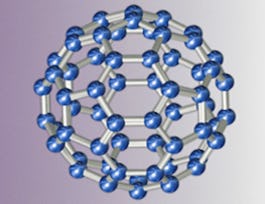Have you ever wondered why ceramics are hard and brittle while metals tend to be ductile? Why some materials conduct heat or electricity while others are insulators? Why adding just a small amount of carbon to iron results in an alloy that is so much stronger than the base metal? In this course, you will learn how a material’s properties are determined by the microstructure of the material, which is in turn determined by composition and the processing that the material has undergone.



Material Behavior

Instructor: Thomas H. Sanders, Jr.
Sponsored by BrightStar Care
43,584 already enrolled
(1,284 reviews)
Details to know

Add to your LinkedIn profile
20 assignments
See how employees at top companies are mastering in-demand skills


Earn a career certificate
Add this credential to your LinkedIn profile, resume, or CV
Share it on social media and in your performance review

There are 6 modules in this course
This module will introduce the core principles of materials science. Topics that will be covered include the different general material types (metal, ceramic, polymer, etc.) and the properties associated with each type, some methods that are used to experimentally determine and quantify a material's properties, and how a materials engineer might go about choosing a suitable material for a simple application. This module also introduces the concept of the microstructure-processing-properties relationship which is at the heart of all materials science.
What's included
14 videos4 readings2 assignments
In this module, we will discuss the structure of the atom, how atoms interact with each other, and how those interactions affect material properties. We will explore how the types of atoms present in a material determine what kind of bonding occurs, what differentiates the three types of primary bonds - metallic, ionic, and covalent, and the implications of the type of bonding on the material microstructure. You will learn how atoms arrange themselves as a natural result of their size and bonding. This knowledge will provide you with a foundation for understanding the relationship between a material's microstructure and its properties.
What's included
18 videos3 readings4 assignments
This module covers how atoms are arranged in crystalline materials. Many of the materials that we deal with on a daily basis are crystalline, meaning that they are made up of a regularly repeating array of atoms. The "building block" of a crystal, which is called the Bravais lattice, dtermines some of the physical properties of a material. An understanding of these crystallographic principles will be vital to discussions of defects and diffusion, which are covered in the next module.
What's included
21 videos2 readings4 assignments
In the previous module, we learned how the lattice structure of a crystalline material in part determines the properties of that material. In this module, we will begin to learn how defects - deviations from the expected microstructure - also have a large effect on properties. This module covers one-dimensional, or point, defects which can be missing atoms (vacancies) or excess atoms (interstitial solution) or the wrong type of atom at a lattice point (substitutional solution). Building on these concepts, part of this module will cover diffusion - the movement of atoms through the crystal structure.
What's included
19 videos2 readings3 assignments
This module covers two- and three-dimensional defects such as dislocations, grain boundaries, and precipitates. The discussion extends to explain how deformation of a material is accommodated at the microscopic level. We will finish by addressing how the presence and properties of defects can increase or decrease the strength of a material.
What's included
23 videos2 readings4 assignments
In this module, we discuss materials that are not fully crystalline, such as polymers, rubbers, and glasses. You will learn how the absence of crystallinity affects the behavior of these materials and what factors affect their formation and properties. Lessons include discussions of the microstructure and defects in amorphous materials, partial cystallinity in polymers, and demonstrations of materials exhibiting ductile and brittle behavior at different temperatures.
What's included
24 videos3 readings3 assignments
Instructor

Offered by
Why people choose Coursera for their career




Learner reviews
1,284 reviews
- 5 stars
80.91%
- 4 stars
15.73%
- 3 stars
2.64%
- 2 stars
0.23%
- 1 star
0.46%
Showing 3 of 1284
Reviewed on Apr 23, 2024
Just Awesome. Greately Enjoyed with all the graphical and diagrammatical representation. Strongly recommended for matreial engineering!
Reviewed on Sep 27, 2020
WE ARE ABLE TO UNDERSTAND THE COURSE VERY CLEARLY. HENCE WE CAN GAIN THE KNOWLEDGE OF MATERIAL BEHAVIOR. AS A BEGINNER WE CAN CHOOSE THIS COURSE AND LEARN THINGS.
Reviewed on Jul 19, 2021
one of the awesome platform where a person just to focus on and get the knowledge that has been delivered in the easiest Way
Recommended if you're interested in Physical Science and Engineering

Rice University

Pohang University of Science and Technology(POSTECH)

Pohang University of Science and Technology(POSTECH)

Dartmouth College

Open new doors with Coursera Plus
Unlimited access to 10,000+ world-class courses, hands-on projects, and job-ready certificate programs - all included in your subscription
Advance your career with an online degree
Earn a degree from world-class universities - 100% online
Join over 3,400 global companies that choose Coursera for Business
Upskill your employees to excel in the digital economy


